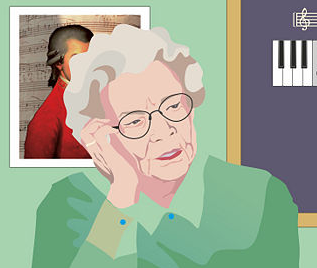I made a profile in wikihow.com, and by chance, I saw this article:
The people who have written it out have really done a lot of effort, including pedagogical graphics like this one:

Unfortunately, the text is a tour de force through all the typical misconceptions you would meet in any presentation about music and composition in education. It seems futile to start and edit the article, – after all it is conform to the most widespread ideas about the subject, so my only reasonable option was to give this comment in the discussion:
“This article is a brilliant example of how to confuse people and block their musical creativity. It stems from the misunderstanding that the analysis of existing music, underlying what we call music theory, IS in fact music
However, music does not come from nowhere, it is embedded in a CONTEXT.
Explaining people how to compose by showing them scales, chords and instruments is like explaining someone how to communicate with another human being by giving them an alphabet and asking them to know the sequence of the letters by heart.
This musical autism is lamentably very widespread, and it is reproduced in education all the way to the conservatories. Being at a higher level of studies does not bring clarification but simply adds complexity to the same confusion.Using sound as a means of expression MIGHT involve instruments, chords, scales, tones etc, but basically the capacity of composing is rooted in our everyday lives. Composing is something that we humans do all the time. As a collective we build a common world, an assemblage, and one of the most fundamental means we possess to that end is our ability to use language.
In language, we are capable of expressing and perceiving the most minuscule nuances in our interactions through sound.
THIS should be the message to someone asking how to compose music, that you are doing it already, and you can depart from this activity and prolong and extend it into sequences of sound. Use all kinds of existing music and sounds around you, choose according to your intuition, be a whole human being, use your voice and body as impulse giver. Remix, reuse, hack your way into existing technologies – digital as well as acoustic instruments, and build forms in sound inspired by everyday life events, social scripts and narratives.”

